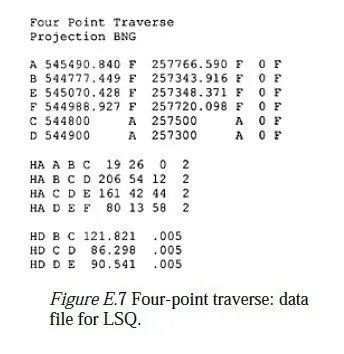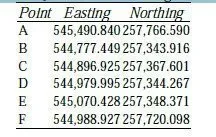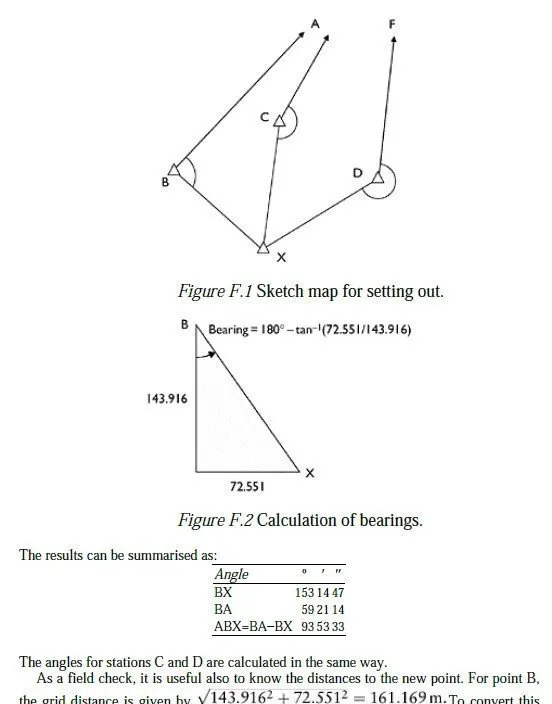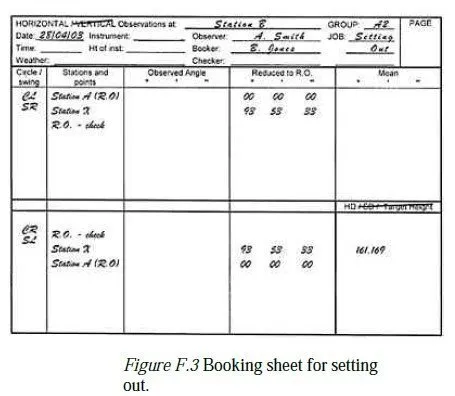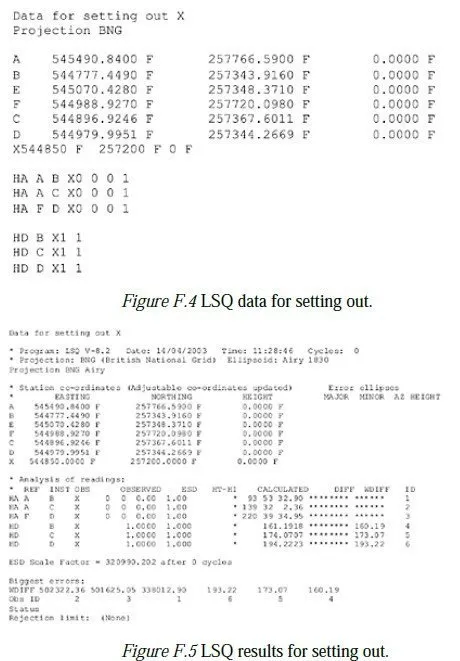The purpose of conducting a traverse of the type described in Appendix E would typically be to establish additional local control points, in order to set out specified points for construction work. Suppose now that it is required to set out a foundation point X at the co-ordinates (544,850.000E, 257,200.000N) to high accuracy. The accepted co-ordinates of the nearby stations can be taken from the LSQ results shown in Figure E.7 and summarised as:
From a simple sketch map (Figure F.1) it is clear that stations B, C and D would be suitable for setting out X. It is good practice to use a station as far away as possible as a reference object, so we will use station A as a reference for B and C. To avoid the possibility of a systematic error caused by a mistranscription of As co-ordinates, we will use station F as a reference for station D.
F.1 Manual calculation
To calculate the angle which must be turned through at B, we need the bearings BA and BX. The first of these has already been calculated, as shown in Figures E.3 and E.4. The other is calculated in a similar manner, as shown in Figure F.2.
To convert this into a horizontal distance on the ellipsoid, we must divide by the local scale factor (0.999859, as calculated in Section D.1); this gives 161.192 m. This can also be accepted as the horizontal distance without further calculation, as the ellipsoidal heights of all the points are small. Again, the distances from points C and D are calculated in the same way.
sample booking sheet, prepared for setting out the angle from point B to point X using A as a reference object, is shown in Figure F.3. The blank areas in the form will be filled out in the field, as described in Section 4.4.
F.2 Calculation using LSQ
The above calculation can be done more quickly (and with less chance of mistakes) using LSQ. If the Data: Update command is applied after the adjustment shown in Figure E.8, the guessed for stations C and D are replaced with the calculated ones. The data file can
then be manually edited, as follows:
1 set the co-ordinates of C and D to be fixed;
2 add station X and its co-ordinates, also fixed;
3 remove all the original observations and replace them with dummy observations,
representing the readings whose values we need to know, e.g. the horizontal angle ABX and the horizontal distance BX;
4 make an appropriate change to the title.
After these changes, the data file will look as shown in Figure F.4. Note that any value can be used as an observed horizontal angle (zero has been used in this case) but that observed distances cannot be zero, so a nominal 1 has been used here. Likewise, the ESDs are dummy values, but must be positive to be legal. Loading this file into LSQ and simply viewing the results (adjusting the data has no effect) gives the output shown in Figure F.5. The relevant information is the set of calculated values for each of the dummy observations, which shows what angles and distances LSQ would have expected from the input data. As can be seen, the angle ABX and the distance BX are the same as in the manual calculation above; and all the other angles and distances have been calculated as well.
